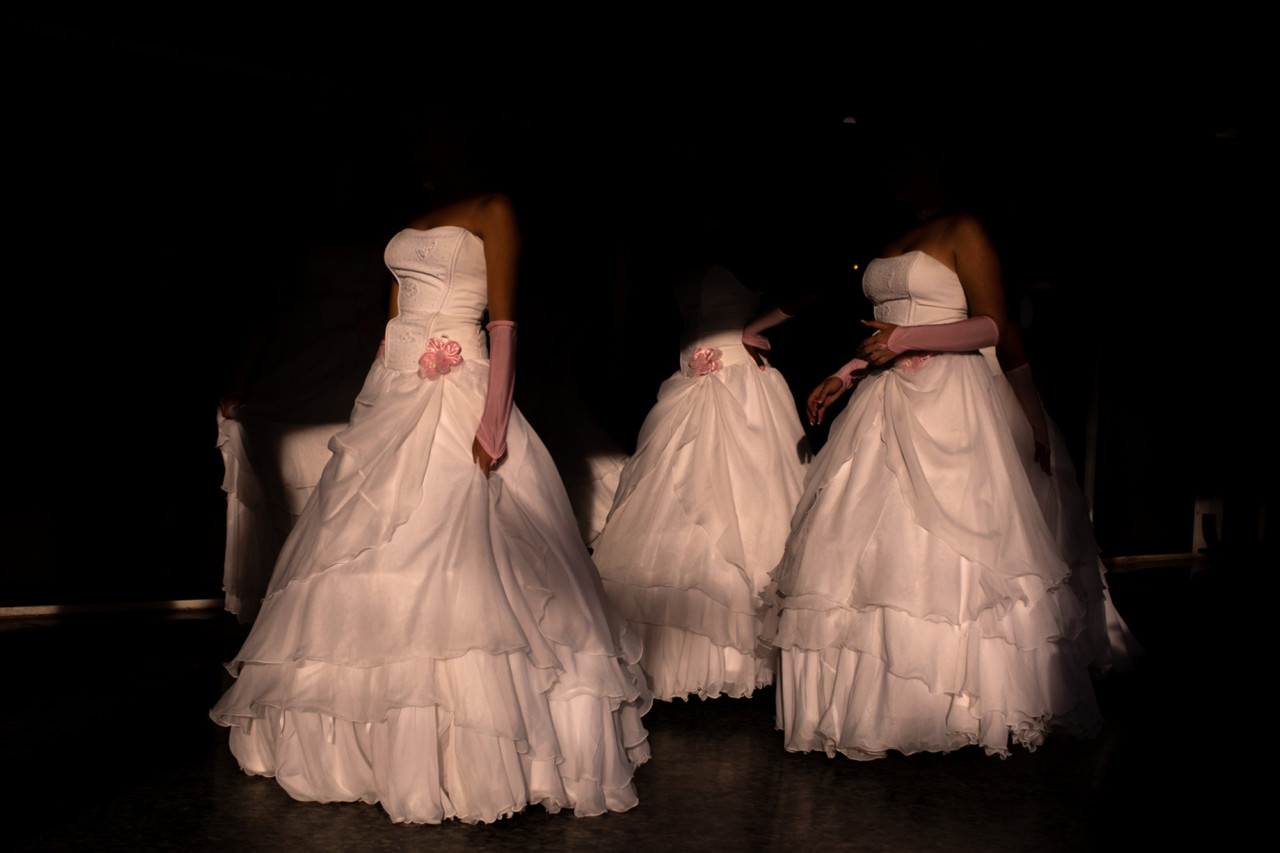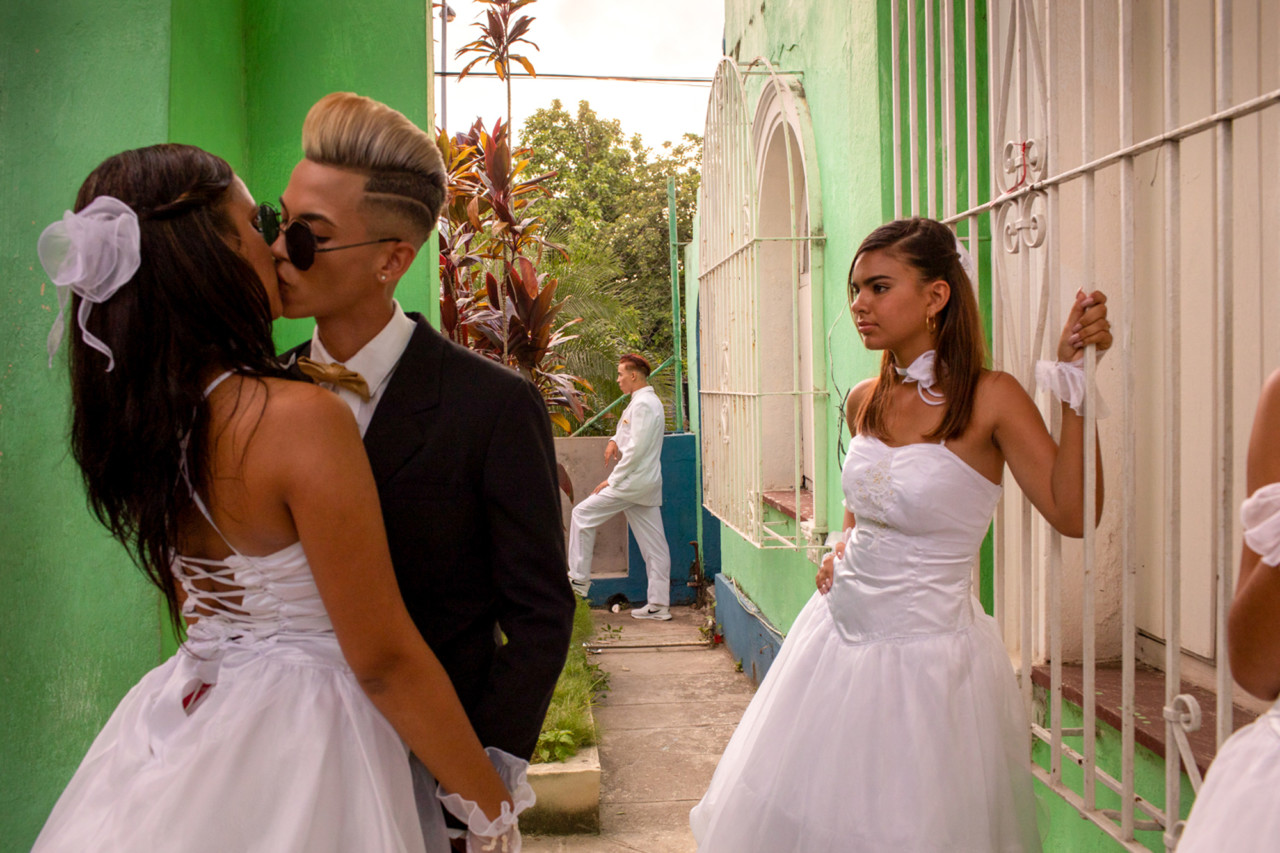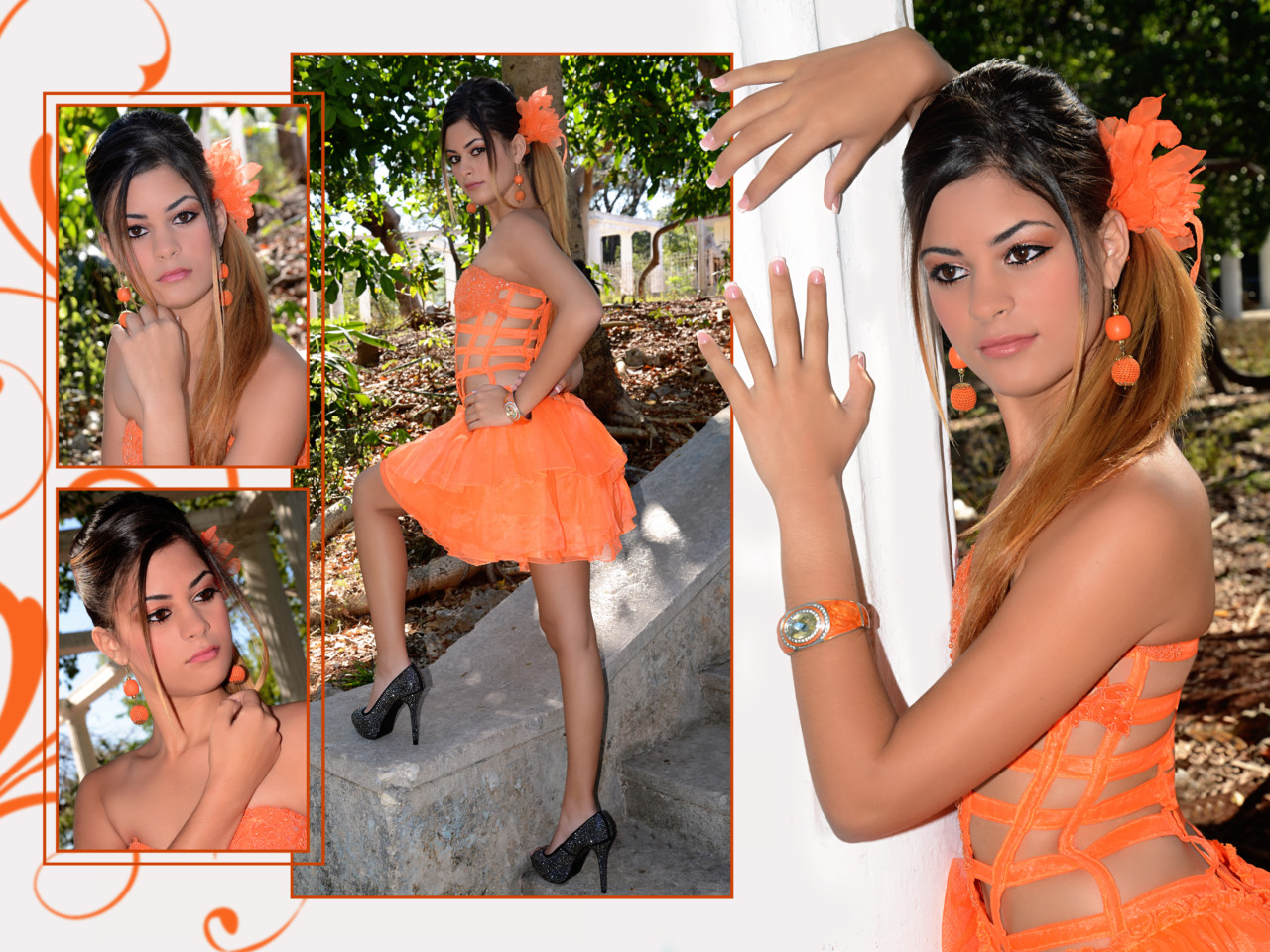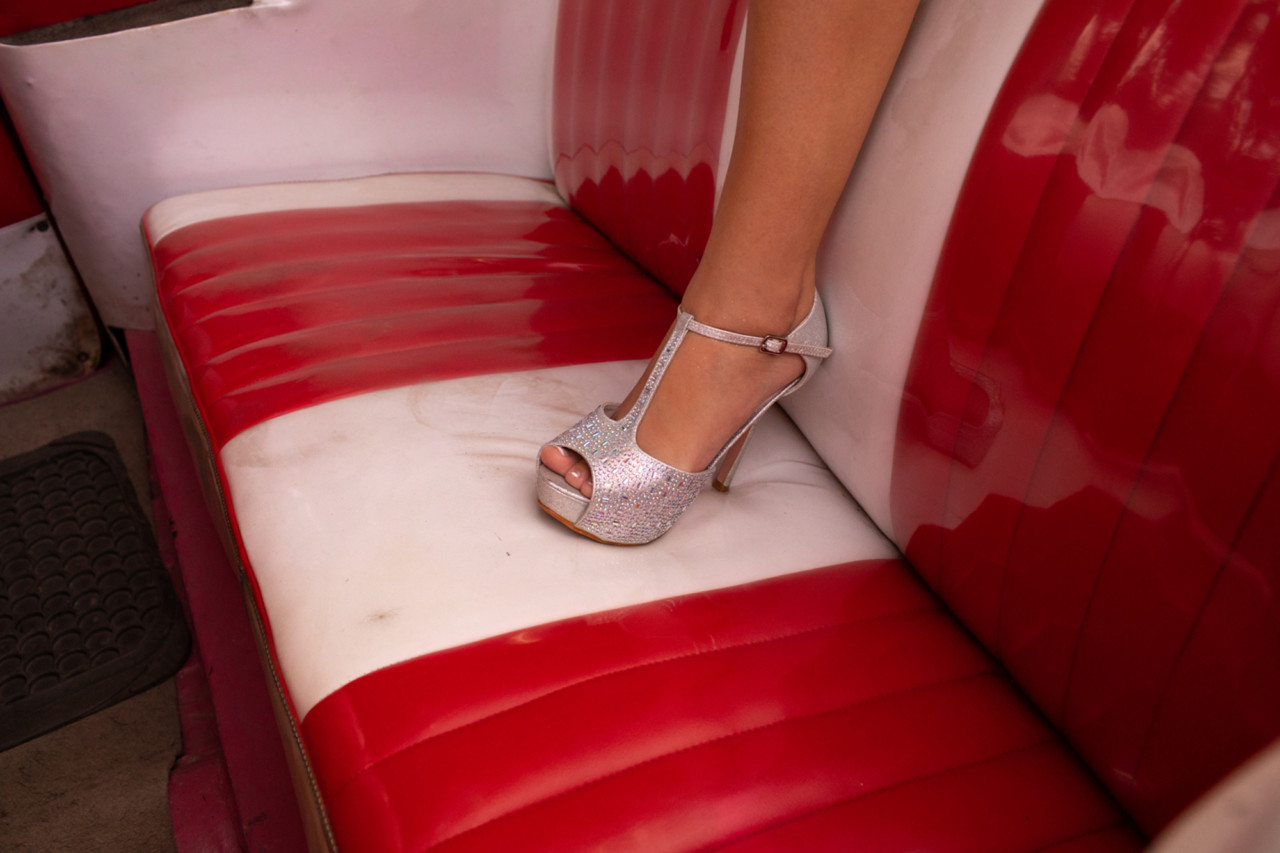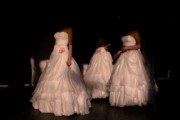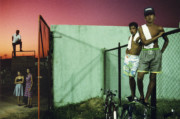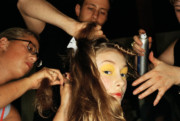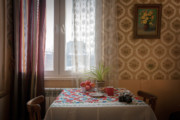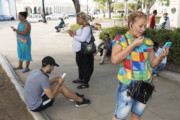Quince: Coming of Age in Cuba
Diana Markosian's new project explores the fantasy of the quinceañera tradition in communist Cuba
After being awarded the 2018 Elliot Erwitt Fellowship Grant to travel to Cuba for one month, Diana Markosian set forth to explore the exquisite moment of transformation, as a girl becomes a woman in society, and the way this experience informs the feminine identity. The ensuing project, Quince, which is made up of portraits and imagery from locally made magazines, will be shown at Paris Photo, in the Grand Palais, from November 8-11.
“A lot of my work is about the past and memory. It is less about going somewhere and more about finding my way into that country and my understanding of what that country represents for me,” the Armenian-American artist explains.
Born in Moscow in 1989, Markosian’s early years were shaped by living through the total collapse of the Soviet Union. She discovered an immediate and intimate parallel between her childhood experiences and the lives of those she encountered during her visit, “The 90s in Cuba was a time that is referred to as the ‘special period’ — a moment when the country, which was dependent on the Soviet Union, was in total economic collapse. It’s something I experienced first hand living in Moscow and Yerevan as a child.”
In sharing these stories, Markosian felt a connection to the lives of those she met in Cuba, and realized the story she was searching for could be found deeper in the countryside. She began traveling outside of Havana, going from town to town, until she arrived in Matanzas, famed as the birthplace of the Afro-Cuban music and dance traditions of danzón and rumba.
Here, she met a few girls and their parents, who struck up a conversation by showing Markosian a photobook that was made for their daughter’s quinceañera, a Latin American tradition celebrating a girl’s 15th birthday. As Markosian leafed through the book, she became intrigued.
“There’s was something so special about the book, about what it represented. The first pages showed the girls posing in princess gowns, against fantasy-inspired backdrops. The last images portrayed the girls in a more mature ensemble. They were considered the ‘artistic images’ that showcased her womanhood.”
Markosian was fascinated and had been wholly unaware of the phenomenon of these photobooks. In popular culture, the quinceañera is known for its grand parties that rival debutante balls. But in Cuba, as Markosian learned, families make a choice between parties and these books. Many opt for the book in recognition of its affordability and longevity.
“On average, the photobook costs $300–$500 to produce. If you think about how the average Cuban makes about $25 a month, it’s a pretty steep price to pay, so Cubans save up for their daughter’s quinceañera from the day she is born,” Markosian notes.
Some families can afford a party, which Markosian was told can cost from $3000 to $5000. They may have it at home or at a hotel, though the food will be minimal and served at the end due to the expense. Other families prefer the book because not only is it far less expensive but it also lasts longer than one day.
Markosian immediately recognized the story she wanted to tell and set about the project, Quince, a series of portrait photographs and party reportage documenting the Cuban quinceañera. “For Cubans, there is a weight placed on [the quinceañera] because so much of their reality is about trying to survive and here’s a moment of lavish celebration,” Markosian says.
“The idea that a girl can live out a fantasy that places her in a position of wealth and status is especially significant in a society that is so focused on equality. There is a stark contrast between that day and what she returns to when it’s all over. The photobook, more so than the party, allows that fantasy to live on.”
In Quince, Markosian discovers the Matrioshka doll of femininity nestled deep within the princess archetype. Within each image lies another ready to be explored, a layering of female identity that assumes a knowledge of seeing and being seen, of desiring and being desired, of being and becoming.
To create the portraits in Quince, Markosian established a partnership with a local photo studio, which reached out to about eight local girls and their parents, inviting them in for a 30-60 minute interview about womanhood and what it meant to them, followed by a portrait session.
As Markosian worked on the portraits, she felt a sense of being awed by the lack of self-consciousness the girls exhibited in front of the camera. “I couldn’t believe how proud they were. It was so refreshing to see somebody feel so comfortable in their own skin and to pose so freely and beautifully. I don’t know how to be as open as that,” she reveals.
“In Cuba it’s very different. It is a culture that allows you to come into your own. It feels much freer and less inhibited. They are open about the body and how they perceive themselves. You can see it in their dancing and the way Cubans move and behave.”
This sensuality lies deep in the heart of the complex relationship between identity, self-expression, and self-representation that naturally occurs during this stage of adolescence. It is an expression of the self as a sexual being that is simultaneously channeled through socially constructed ideals of the feminine.
“I think there’s a need to be seen in Cuba. The book provides for that. Along with the conventional book, families can also purchase a magazine-like supplement, where the girl puts on different outfits and goes around the city on photo shoots as if modeling a perfume or lipstick. Those images are taken and Photoshopped with brands like Chanel and Versace. ”
Such is the power of the image, the icon, and the luxury brand, which carries across the Caribbean when Cuban-American girls come to Havana to celebrate their quinceañeras. “We saw one girl pull into a hotel with seven cars following her. The entire hotel was full of her guests, who she brought over from America, so it’s a very different experience for her. Her party probably cost about $20,000,” Markosian details.
That occasion stood in stark contrast to the story of Pura, a local girl who Markosian met when she was on her way to a salon to pick out a dress to wear to her quinceañera the following day. When Markosian arrived at Puma’s home the next day, there were hundreds of people gathered on the street. Making her way through the tight crowds, Markosian entered the house, while Pura was upstairs getting ready.
The house was decorated with athletic medals. Pura’s mother revealed that her daughter had been a gymnast but no longer practices because, “She hasn’t been feeling well.”
Pura’s brother explained that she had been diagnosed with a brain tumor and that the doctors warned she would only live to be 13. He showed Markosian the modest photobook they made for Pura at 13, so that she could celebrate an early quinceañera of sorts — it was a far cry from the party which was to unfold later that night.
Right before Markosian went upstairs, Pura’s mother showed her a photograph, of Pura, after one of the three surgeries she has had. Markosian felt a weighty sense of responsibility that had not been there before.
“I felt so attached to her. The neighborhood crowded in front of her home, waiting to see her in her gown. As she emerged from her home, neighbors cried and shouted. It brought another meaning to the notion of coming of age. She’s a woman now, and a survivor.”


